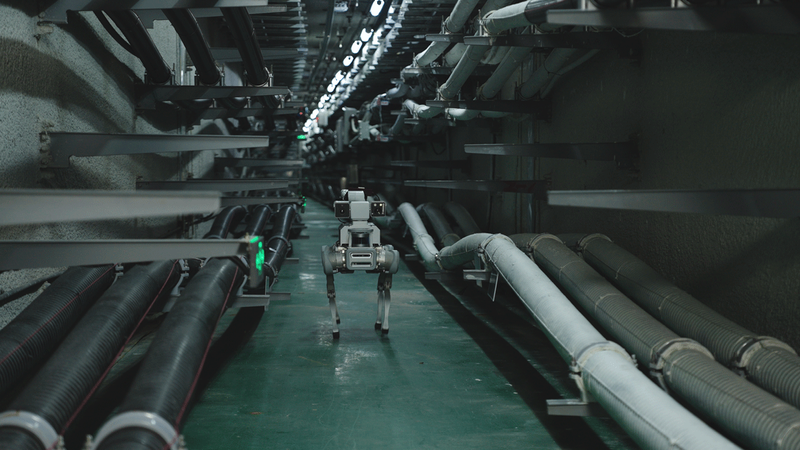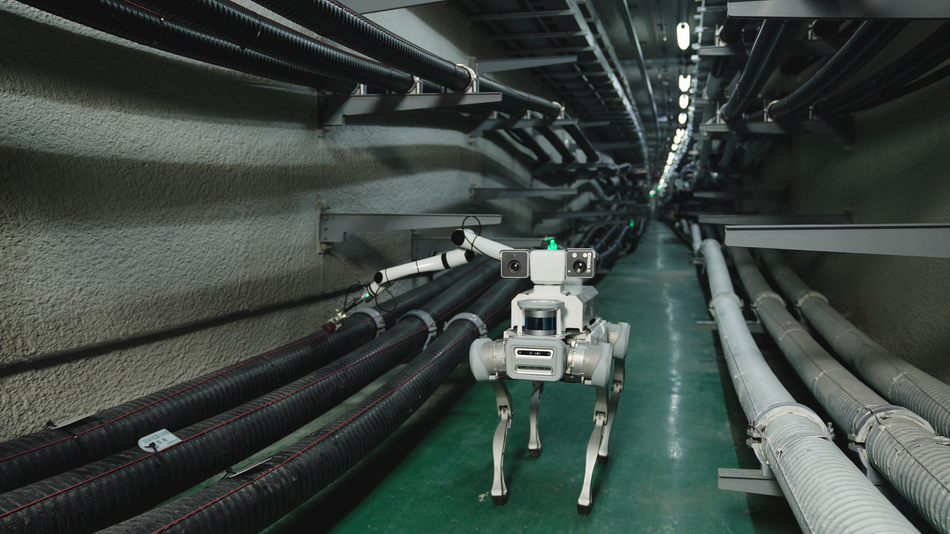How X20 Robot Dog Intelligent Cable Tunnel Inspection System Complete Mobile Detection
The X20 robot dog can perform automatic inspection tasks according to the preset path and tasks. During the inspection, the robot uses LiDAR and depth cameras to detect the terrain, and has the ability to turn around, climb stairs, and obstacle avoidance.

X20 Tunnel Inspection
This article was first published on
www.deeprobotics.cnBackground
Cable tunnels are essential for urban power transmission, especially for ultra-high-voltage cables requiring complex networks and flexible layouts. However, cable tunnels also face many challenges in terms of construction and maintenance, such as seepage, gas explosion, dust pollution, and partial discharge.
Traditional cable tunnel inspection methods are labour-intensive, time-consuming, subjective, and unsafe. They usually involve many trained operators to conduct regular inspections for hours, shortening the time for analyzing reports for the day. Moreover, the operators have to enter the tunnel environment that may be full of poisonous gases, high-voltage cables, and other electrical equipment, which greatly threatens their health and safety.
Therefore, there is an urgent need for a new technology that can improve the efficiency, accuracy, and safety of cable tunnel inspection.
 X20 has the capability to traverse rugged terrain
X20 has the capability to traverse rugged terrain

DEEP Robotics is a leading company in the field of quadruped robot industrial applications in China, which cooperates with Jiangsu Mingyue Software Technology to develop an intelligent cable tunnel inspection system that integrates various detection methods such as partial discharge, temperature detection, video monitoring, and defect warning. The system uses a four-legged robot equipped with partial discharge sensors on the robotic arm and a Bi-spectrum camera to inspect multiple cables along a planned route in the tunnel environment and upload the data in real-time. The system can greatly reduce the number of times and frequency of inspection personnel entering the cable tunnel and improve maintenance efficiency and safety.
The X20 robot dog can perform automatic inspection tasks according to the preset path and tasks. During the inspection, the robot uses LiDAR and depth cameras to detect the terrain and can turn around, climb stairs and obstacle avoidance. The six-degree-of-freedom robotic arm can flexibly perform cable detection work with trajectory restorations in a narrow tunnel space.
The partial discharge detection device can detect discharge signals from 0 MHz to 100 MHz, and accurately identify surface discharge, corona discharge and internal discharge of cables within 200 meters, providing early warning of risks to ensure safe operation.
The Bi-spectrum camera features video monitoring and infrared temperature scouting for video and photo capture, identifying temperature differences with an AI algorithm to find out overheated points for early warning.
All collected data can be transmitted to the server in real-time through network devices and timely synchronize information with the staff responsible for monitoring in the background, providing data support for further decision analysis for maintenance personnel.
Benefits
The X20 intelligent cable tunnel inspection system with mobile partial discharge detection has brought many benefits to the power industry, such as:
• Improving the efficiency of cable tunnel inspection by reducing the time of inspection and data analysis.
• Improving the accuracy of cable tunnel inspection by using objective and quantitative data from multiple sensors instead of relying on subjective and qualitative judgments from human operators.
• Improving the safety of cable tunnel inspection by minimizing the exposure of human operators to hazardous environments such as poisonous gases, high-voltage cables, and other electrical equipment.
• Improving the reliability and safety of the power supply by detecting and preventing potential faults caused by partial discharge in advance, avoiding fire or breakdown accidents.
